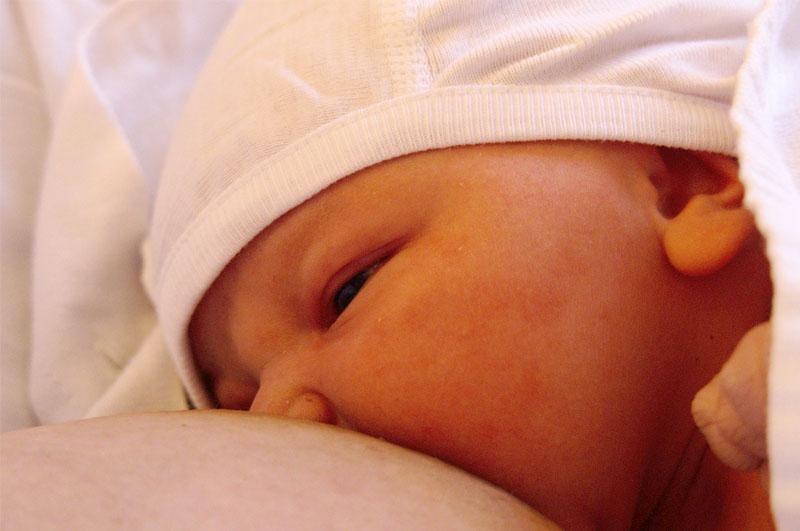Everyone knows that breast milk is a precious source of nutrition that nature offers to humans. This is the best food for your baby’s development in the first year of life. In breast milk, there is enough energy and essential nutrients such as protein, sugar, fat, vitamins, mineral salts to be appropriate for the absorption and development of the baby’s body.
Especially in breast milk contains many antibacterial substances can increase the resistance of children without any food can be replaced. These are immunoglobulins, mainly IgA, which protect the body against intestinal diseases and infections.
Therefore, when a baby is breastfed, he or she will digest better and absorb better substances, less constipation, intestinal infections, and pneumonia.
I’m sure this article will provide you enough all you need about breastfeeding. Let’s take a look!
A little bit knowledge about mother’s milk
In breast milk, there is almost enough substance that a baby needs in the early months and contributes an important part to the development of the baby in the coming months. Breast milk is a template for the production of infant formulas that are not breastfed, as children are expected to develop as a full-term breastfeeding baby.
In nutritional aspects, protein in breast milk is suitable for kidney function of children, and the quality of essential amino acids and proteins are easy to digest and absorb.
Protein milk contains 70% whey (soluble protein contains many antibodies against diseases, digestive, easy to absorb), and 30% is casein protein (insoluble protein, usually plays the role of developing muscle mass, absorption The smaller the child is), while the cow’s milk protein has 18% whey and 82% casein.
Fat in breast milk is also ideal for the fatty acids necessary for the development of the brain and the nervous system as well as the cells in the body. Formulas have to try to supplement these essential fats, such as DHA and ARA, to be closer to breast milk.
Children also have the ability to fight infection by antibodies, antioxidants, anti-inflammatory substances that breast milk provides to children while avoiding the risk of allergy.
Carbohydrates in breast milk are lactose and oligosaccharide that play a role in brain development as well as stabilize the intestinal flora, increase immunity, protect against constipation.
Breastfeeding infants are less likely to be fertilized, often with soft, sometimes slightly liquid, odorless or slightly acidic whites while cow’s milk is more stiff, moldy, smelly and easily fed.
All you need to know about breastfeeding
Around the third day, when the milk begins to “accumulate.” the chest will feel heavier, and you will notice that the baby will swallow larger sips at each feeding. Do not worry about all the milk without giving your baby milk.
As the baby sucks more, the more milk the body produces. Therefore, the best way to establish and maintain a supply of milk is to feed the baby whenever the child is hungry.
– Babysitter: Keep your child ultimately facing your face. Raise the baby chin touches the chest, the nose is not blocked, and head slightly backward.
– Encourage the baby to open his mouth: Apply the chin to his chest and rub the upper lip and nostrils with the nipple to help him to open his mouth.
– Sucking on the nipple: When the baby has opened his mouth, pointing the nipple to the roof of his lips. Your baby will chew on the nipple and most of the breast (the dark part around the nipple) in the mouth. The nipple that opens the mouth is more than the bottom of the mouth.
– Check your posture: Mom should think about the feeling when the baby starts sucking. Are you hurt? Pull a little closer? Does it still hurt? If so, gently remove the child and start again. The baby will get milk through a combination of sucking motion and pressure in the mouth. You can also feel the tingling sensation, as the milk begins to flow, and you will see the baby sucking / swallowing more rhythmically.
– Breastfeeding: Usually, the baby will stop feeding and release itself. If you want to stop breastfeeding, mothers can gently poke their little finger at the corner of their mouth to stop the sucking. Your baby will soon tell you that he or she is hungry.
Mothers who do not want to have a bottle but are about to go to work can refer to these tips:
1. Spend a full day feeding your baby with a bottle, not cramming or feeding the baby, at least 2-3 hours before meals. Then, when the child was hungry and appetite, she fed her milk. Although she will not be at first, the too hungry baby also has to feed. Maybe, she will have to suck milk to avoid breast tenderness when the milk that she was not hungry.
2. It is possible for a grandmother or a friend of the family to feed their children when they are hungry because if they are carrying their mommy, they can recognize their mother, and they will not tolerate it.
3. Try different types of jars and nipples. Soft nipples, close to the mother ti always preferred.
It is very imperative to choose the right jars for your kids; therefore, I highly recommend you to have a look at this article. This article will provide you the best bottle sterilizer.
Conclusion
Breast milk is essential to your baby’s health and development. It is also a very important part of the process of fostering a loving bond between mother and baby. If you have trouble with breastfeeding, refer to experiences from mothers and nurses.
Lastly, I hope you can have enough information about all you need about breastfeeding. Thanks for reading my post. Have a nice day and see you soon.








